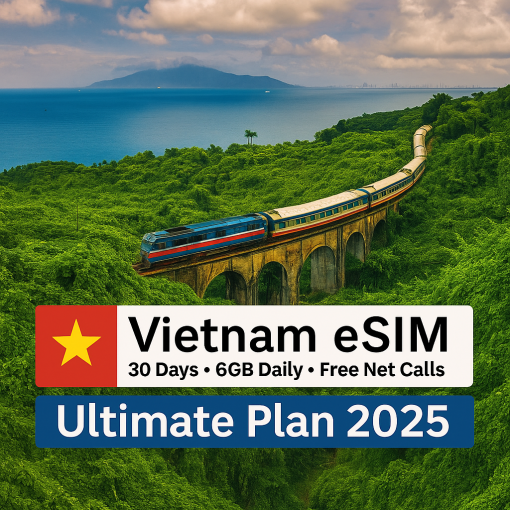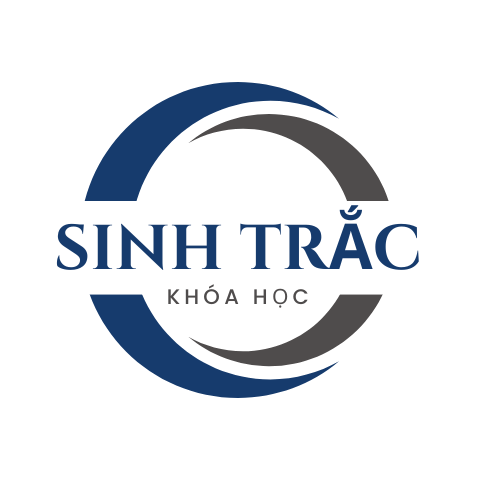Thirty days in Vietnam isn’t a sprint; it’s a rhythm. The right eSIM plan for a month should fade into the background while you work, travel, and repeat. This guide shows you how to pick the right allowance, install it properly, and run a simple weekly cadence so you never scramble for data on a bus to Hoi An.
Why a 30-day plan needs a different approach
Weekend trips tolerate small mistakes. Month-long stays don’t. You’ll mix city days with ferries or mountain loops, work calls with café Wi‑Fi, and the occasional hotspot burst for a laptop upload. What you need is predictability: clean install, clear top-ups, and enough data to absorb heavy days without overbuying.

How much data do you really need?
- Light (navigation, chat, email): 8–12 GB / 30 days.
- Balanced (photo sharing, occasional hotspot): 12–18 GB.
- Workcation / creator (tether + uploads): 18–25 GB with hotspot allowed.
Daily-reset plans are common in Vietnam (a high-speed bucket refreshes at midnight). Run heavy tasks in the morning or on solid café/hotel Wi‑Fi; save your day’s bucket for navigation and ride-hailing during moves.
Two-minute install (do it at home, not at the gate)
- Save the QR to Photos/Files (screenshot too).
- Add eSIM — iPhone: Settings → Cellular → Add eSIM → Scan QR; Android: Settings → Connections/Network → SIM Manager → Add eSIM.
- Set the new line as Default for Data.
- Toggle Data Roaming ON for the eSIM line (helps tower handoff).
- Restart once.
- Open Maps and request a short route; send yourself a quick message. If both work, you’re good.
“The best month-long plan is the one you forget exists by day three.”
The weekly cadence (keeps you calm)
- Sunday usage check: if you’re >60% by day 15, top up before a long transfer day.
- Offline maps ritual: before ferries or mountain passes, download offline areas and pin hotels/cafés/gas.
- Hotspot etiquette: burst for uploads, then switch off. Carry a slim power bank; tethering + maps drains fast.
When you might want a local number
Most month-long stays run fine on data-only. If you truly need voice/SMS (landlords, suppliers,
long-term logistics), you have two clean paths:
- Choose a number-included eSIM SKU (some non-Viettel options in GoVnSIM’s catalogue).
- Visit an official Viettel store with your passport for ID-verified registration to get a Viettel number in your name.
Note the nuance: the Viettel eSIM sold by GoVnSIM is data-only (no number/OTP). Regardless of
provider, we don’t recommend relying on tourist eSIMs for banking OTP—use compliant channels to
avoid verification issues.
Troubleshooting that actually works
- Bars but no data: Airplane Mode 10 seconds → off; confirm the active data line is the eSIM; restart once; move a few meters or near a window to re-attach to local bands.
- “Sticky” speeds: nudge with airplane-mode toggle; defer heavy sync to morning or good Wi‑Fi.
- Wrong SIM routing: label the line “VN‑Data” so your phone never defaults to your home SIM for data.
Packing list for a smoother month
- Unlocked phone with eSIM support (iPhone XR/XS or newer; recent Pixel/Samsung).
- Slim power bank + short cable.
- QR + plan details saved and screenshotted.
- Offline maps for your next city queued the night before travel.
One clean starting point (then move on)
If you want a set-and-forget month plan you can manage online, consider eSIM Vietnam 30 Days. Install at home, label the line, do the Sunday check, and let your connection disappear into the background where it belongs.
Bottom line
For a month in Vietnam, buy for predictability: clean install, sensible data range, easy top-ups,
and small habits that keep transfers stress-free. Do that, and your eSIM becomes the quiet backbone
of a great 30-day stay.
